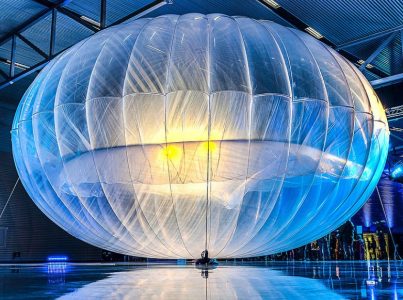7 Facts: Google’s Internet Balloon, Project Loon Uses AI for Better Direction Control - Dispatch Weekly
September 26, 2016 - Reading time: 4 minutes

Google’s Internet balloon, Project Loon, which has stayed aloft in Peru’s airspace for 98 days, has started to use artificial intelligence to improve wind-prediction capabilities, allowing the 4G-beaming balloons to steer towards specific directions.
#1 AI and Machine Learning Used to Alter Balloon’s Behavior
By using artificial intelligence and machine learning, the balloon can now stay in the air much longer with a test balloon staying in the air for 98 days quickly changing movements according to weather conditions.
“Reinforced learning” happens when the balloon predicts what will happen and acts automatically to the situation.
#2 Cheaper Balloons with Expanded Outreach
AI could help keep costs low by keeping balloons in the air longer as well as expanding outreach.
Fewer balloons with a longer staying power could help more people over a wider area receive aerial Internet access.

#3 Using Human-Coded Algorithms
Project Loon uses human-coded algorithms to understand how high or low in the stratosphere the balloons need to reach in order to catch a successful current, taking them to the chosen direction.
The balloon had to be adjusted nearly 20,000 times for a 12-day trip, spending 20km latitude above Chimbote.
#4 17 Million Kilometers of Flight Data
Wired has reported that Loon’s navigational system that uses machine-learning techniques, needs 17 million kilometers of flight data to be collected in order to estimate wind directions.
#5 Google’s DeepMind Also Uses Reinforcement Learning
Google’s DeepMind UK AI team also used reinforcement learning for systems like AlphaGo, teaching DeepMind to play games successfully and finish challenges.
Sal Candido, a former Google search engineer said:
“We have more machine learning in more of the right places. These algorithms are handling things more efficiently than any person could.”
#6 Aircrafts to Power Internet Access
If the Project Loon proves successful, Internet connection could be provided by aircrafts, allowing areas in hard to reach places receive online access.
#7 Legal Problems for Google Balloon Project
Google’s Internet balloon has received legal limitations that are taking time to overcome. Facebook has experienced a similar situation with their huge solar-powered drone.
Depending on how fast they can sort out these legal matters, the future of aircraft, Internet and solar power may be limited.

DW Staff
David Lintott is the Editor-in-Chief, leading our team of talented freelance journalists. He specializes in covering culture, sport, and society. Originally from the decaying seaside town of Eastbourne, he attributes his insightful world-weariness to his roots in this unique setting.




